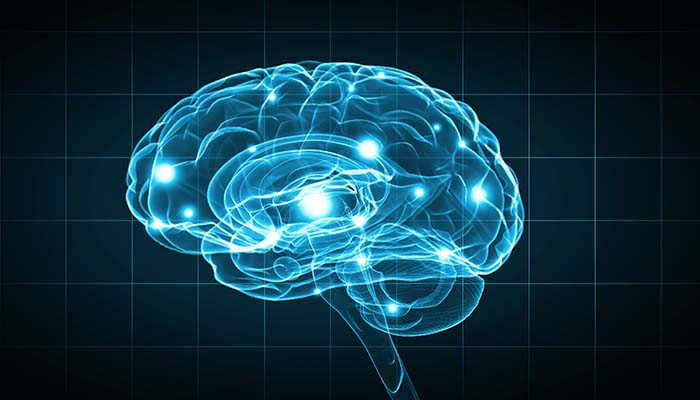A new study shows what diesel exhaust does to the human brain. A new neuroimaging study published in Environmental Health discovered that when exposed to modest levels of diesel exhaust, a component of traffic-related air pollution, it alters brain function processes.
According to the findings, even minor levels of diesel exhaust exposure cause unfavorable changes in brain function. The study indicates the neurological impact that traffic-related air pollution might have after only a short period of exposure. The harmful impacts of traffic-related air pollution on health, particularly respiratory and cardiovascular disorders, are well known.
Furthermore, the harmful impact on the central nervous system is being recognized as a serious health issue. While the exact causes of traffic-related air pollution’s negative effects on the nervous system remain unknown, preliminary research indicates that the particles may be transferred directly through the olfactory bulb or indirectly through inflammation.
These findings are crucial since traffic-related air pollution is responsible for nearly five million fatalities worldwide each year. This causes enormous harm to both the world’s health and productivity.
“For many decades, experts believed the brain was immune to the damaging effects of air pollution.” This is according to Chris Carlsten, a senior study author from the University of British Columbia.
“This study, the first of its kind in the world. It adds to the body of evidence showing a link between air pollution and cognition.”
The research team used a safe way of diluting diesel exhaust and analyzed brain changes. They do this by using magnetic resonance imaging. This is to provide additional proof of the effects of traffic-related air pollution on the body’s systems (MRI).
Following modest activity, participants were exposed to either diesel exhaust or filtered air, allowing for the detection of short-term effects on brain connections.
Participants involved in the Study
Twenty-five healthy nonsmokers, aged 19 to 49 were selected for the study. Community posters, online notices, and email notifications were used to recruit.
The research was carried out in a controlled, double-blind crossover design. This was at the Air Pollution Exposure Lab at Vancouver General Hospital. It is equipped with a cutting-edge exposure booth that can simulate what it is like to breathe a range of air contaminants.
For comparison, each participant was subjected to both filtered air and diesel exhaust at different times. For each exposure, filtered air or diesel exhaust with a particulate matter content of 300 g/m3 or less was present for 120 minutes.
Participants spent the first 15 minutes of each hour pedaling at a slow to moderate pace. The study used a blinded strategy for both subjects and those collecting the MRI data.
As a result, neither the volunteers nor the MRI operators knew whether they had been exposed. That is, diesel exhaust or filtered air. During a six-minute resting state, the MRI technique used a whole-brain anatomical MRI and a functional MRI (fMRI) scan.
When compared to filtered air, exposure to diesel exhaust resulted in a decrease in functional connectivity. This was in the default mode of the network. Previous research has connected improved functional connectivity to physical exercise. Also, the results for the filtered air condition support this finding.
The same effects, however, were not detected for the diesel exhaust condition. This showed that the brain-related benefits of modest exercise are not possible in this setting.
Read More
Study Warns What Diesel Exhaust Does to the Human Brain
“We know that altered functional connectivity in the DMN has been linked to lower cognitive performance and depressive symptoms, so it’s concerning to see traffic pollution disrupting these same networks,” said Jodie Gawryluk, a psychology professor at the University of Victoria and the study’s first author.
“Although additional research is needed to completely understand the functional implications of these changes, they may affect people’s thinking or capacity to work.”
Yet, these findings are crucial for the general public’s wellbeing. These changes in brain activity have been associated with a decline in working memory. Also, poor job performance and lower workplace productivity.
The study, which should be viewed as a public health concern, could assist in enhancing the knowledge base of direct evidence of the neurocognitive consequences induced by short-term exposure to traffic-related air pollution.
Furthermore, the findings underline the necessity of individuals minimizing their exposure to air pollution by taking public transportation, driving less, and wearing protective masks in polluted locations.
“Air pollution is today acknowledged as the most serious environmental danger to human health, with consequences affecting all major organ systems,” Carlsten added.
“I think we would detect similar consequences on the brain from exposure to other air contaminants, such as forest fire smoke. Considering the increasing prevalence of neurocognitive diseases, public health officials and politicians must take this into account.”
Working Principle of the Human Brain
The human brain is a sophisticated organ that processes information and controls many bodily activities. It is made up of billions of neurons, or nerve cells, that communicate with one another via electrochemical impulses.
The human brain’s operation can be broadly characterized in terms of information processing, which includes the following steps:
Input: The brain receives information from its surroundings via the sensory organs. This includes the eyes, ears, nose, tongue, and skin.
Sensory processing: Sensory information is processed in certain areas of the brain. This includes the visual cortex for visual information and the auditory cortex for hearing information. Also, the somatosensory cortex receives touch information.
Integration: Information from multiple sensory regions is integrated in the brain’s association areas, which are in charge of complex cognitive processes like perception, memory, attention, language, and decision-making.
Output: The integrated information is sent to the brain’s motor regions. This generate motor commands that control the body’s muscles and organs, allowing it to respond to its surroundings.
The cerebral cortex, cerebellum, brainstem, and basal ganglia are specialized structures in the brain that perform distinct processes linked to movement, sensation, perception, emotion, and cognition.
The brain’s operating principle is exceedingly complicated, involving a combination of electrical and chemical signals as well as neuronal activity modification by numerous neuromodulators and hormones.
Continuing research aims to unravel the complexities of the brain’s operating principles and create innovative treatments for neurological and psychiatric illnesses.



